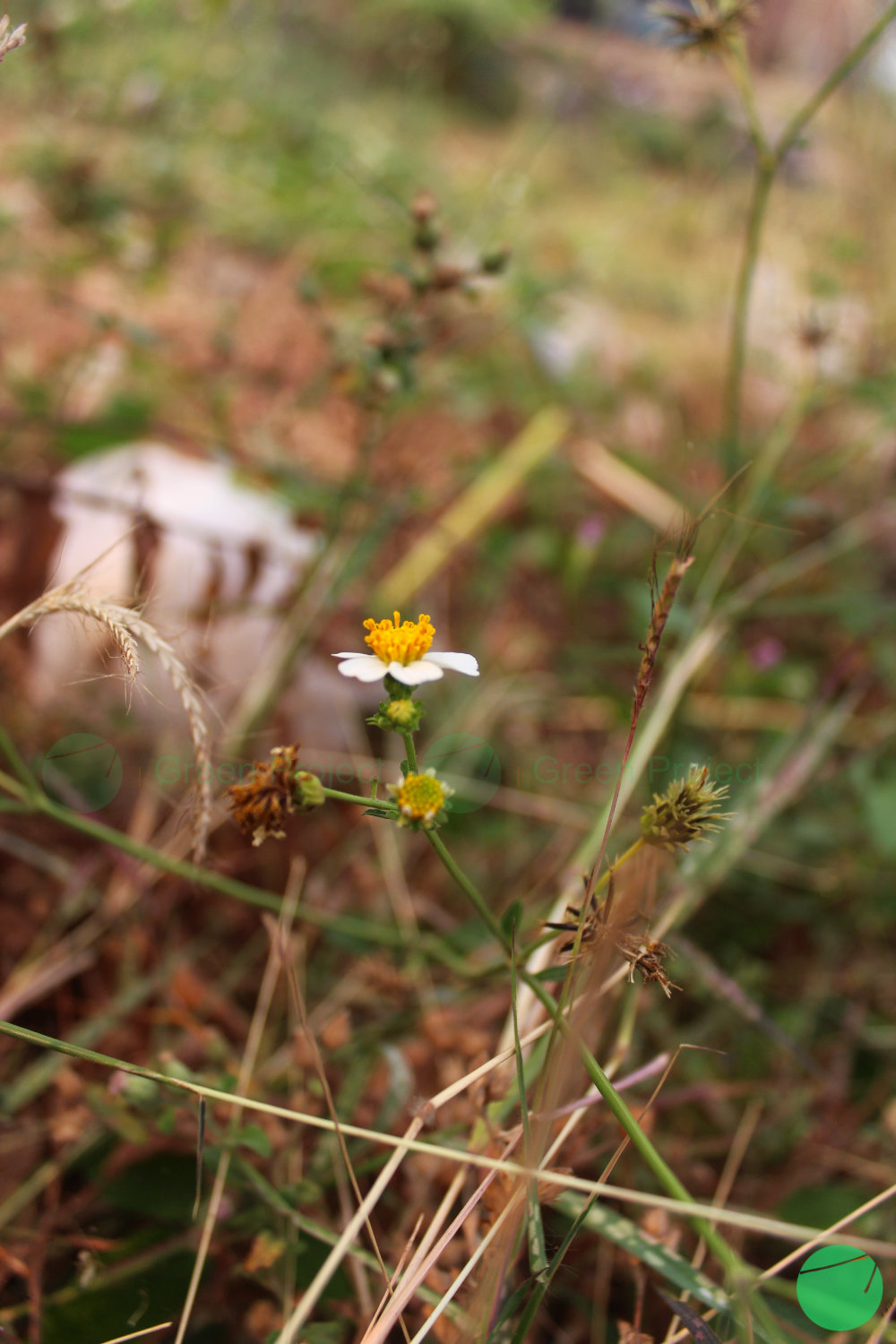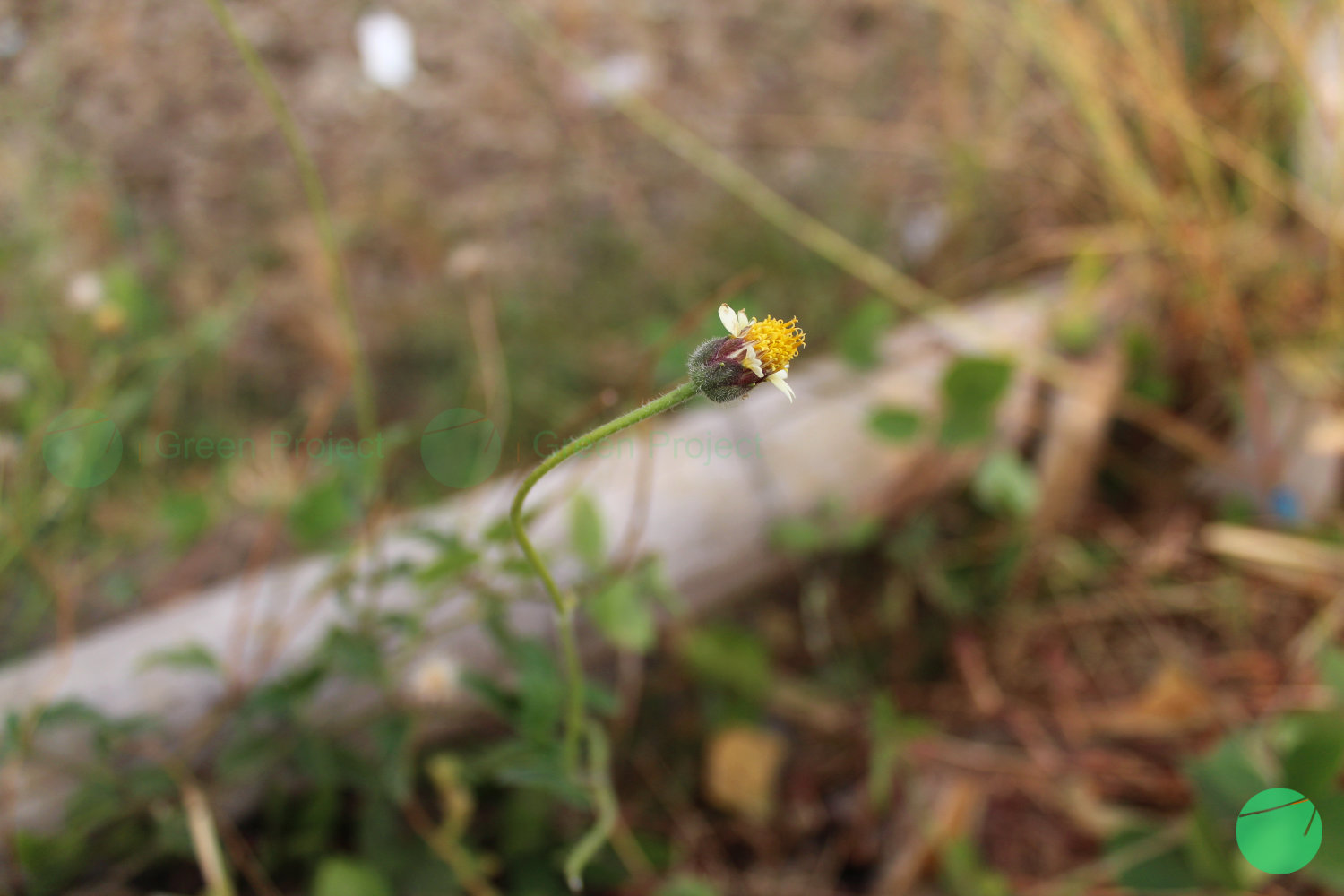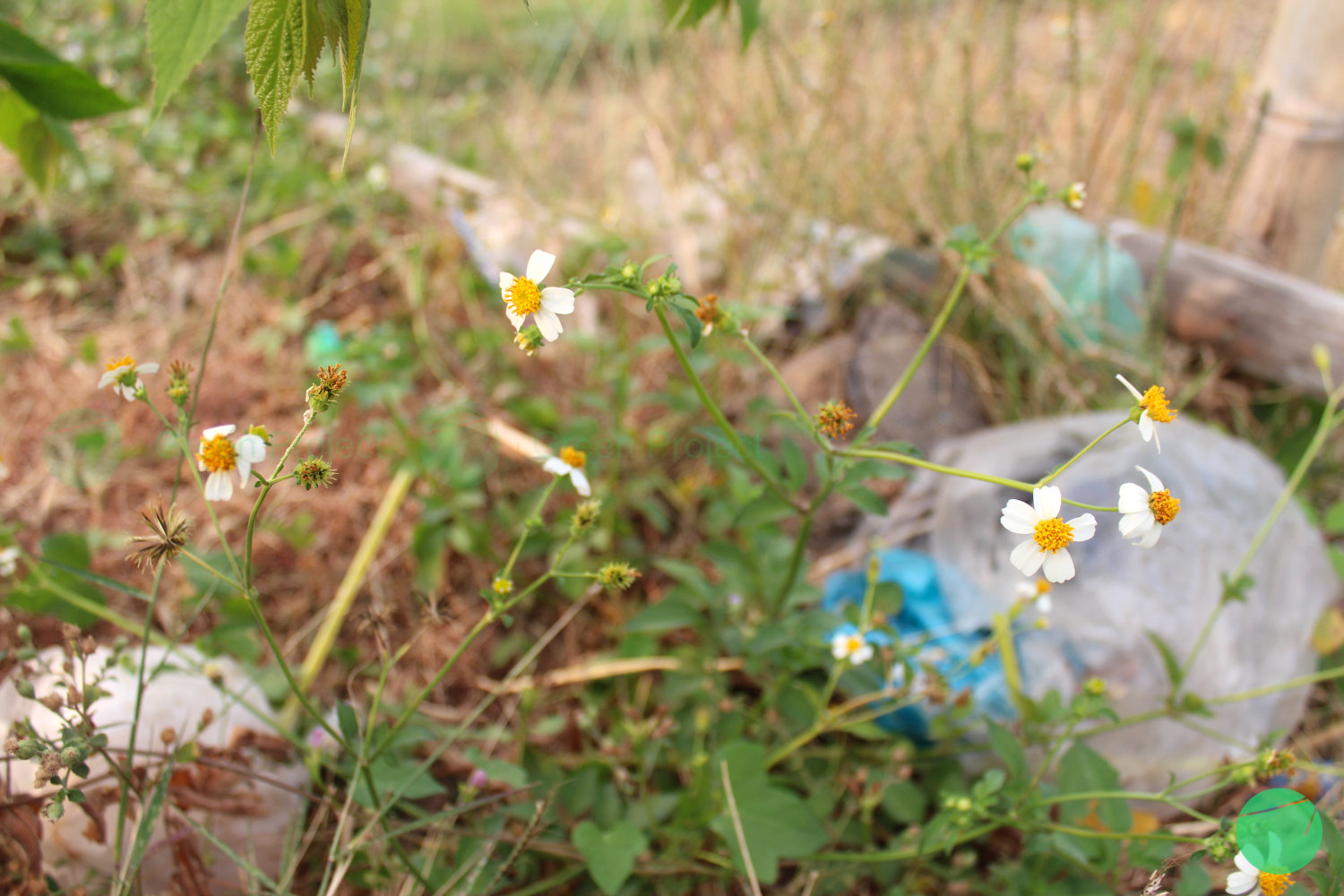Naming Identity
Ketul or scientifically in Latin is called Bidens pilosa. Internationally in English this plant is known as Spanish needles, black jack or beggarticks.
The genus name, Bidens means 2 times (bi) and toothed which refers to the 2 hairs on the tip of the achene of some members of this genus. Meanwhile, the species name, pilosa means hairy, which refers to the velvety surface of the leaves (NParks | Bidens Pilosa, 2016).
Taxonomy
Kingdom | Plantae |
Phylum | Tracheophyta |
Class | Magnoliopsida |
Order | Asterales |
Family | Asteraceae |
Genus | Bidens |
Species | Bidens pilosa |

Origin
Bidens pilosa has almost the same shape as Bidens alba. The difference between the two species lies in the flowers, where Bidens alba has longer florets (approximately 6 to 16 cm) and the absence of disc-shaped florets (NParks | Bidens Pilosa, 2016).
In its distribution, it is also said that the original Bidens alba comes from the Florida area in the United States and is very easy to find in that country, both in tropical and sub-tropical regions. Meanwhile, Bidens pilosa originates from Central America and South America and then spread to the United States (Yuvraj Khamare et al., 2019).
However, plants of these two species have now spread to various corners of the world and have become weeds on the continents of Europe, Asia, Africa, and the Pacific Islands. In Indonesia itself, this plant is a wild plant that grows as a weed on the side of the road, on abandoned empty land, and has become an invasive sugar plant that disturbs plantation land.

Shape Description and Growth
Spanish needle is an annual herbaceous plant with a height that can reach up to 2 meters. The leaves are compound with serrated edges and a soft texture that grows on square-shaped stems.
The flowers are found at the top of the branching stem with 2 types of flowers, namely radiating heads 2 cm wide with yellow disc florets in the middle and white florets consisting of 4 to 7 florets with a length of between 2 and 8 mm. The second is the disc flower which only consists of disc florets without any flower buds. The flowers are a source of nectar for butterflies (NParks | Bidens Pilosa, 2016).
The fruit has rough hair and is an achene (one-seeded fruit) located at the tip which will be black when it is ripe and attached to the hair.

Ingredients, Consumption Culture, and Benefits of The Spanish Needles Plant for Health
Even though the Spanish needle plant has been declared a weed with a very abundant presence in various countries, research is still being carried out regarding its contents and benefits. Several research studies have been carried out in Indonesia using leaf extract as a mouthwash and medicine for canker sores.
The Spanish needle plant leaves contain tannins, cardiac glycosides, saponins, alkaloids, flavonoids, and terpenoids, which can inhibit the growth of various bacteria, including Streptococcus mutans so that their use as a mouthwash may have good antibacterial activity (Meira et al., 2021).
Another research was carried out by a team consisting of Annisa Fitri Purnamasari, Alfiana Nur Halimah, Desi Syahfitri, Desti Nayunda, and Timotius Dwi. They are students from the 2016 class of FKp who brought the innovation of Bidens Pilosa for Stomatitis. Namely, a prototype product from the Spanish needle plant that was transformed into a medicine for stomatitis or canker sores (Unair News, 2019).
As a herbal plant, native people of the Amazon in South America consume it as food and herbal tea. Meanwhile, in Uganda and Africa, the leaves are boiled in sour milk and consumed as a vegetable. In the Himalayas, residents harvest the fresh leaves for a drink known as Ladakhi tea.
Not only that, but all parts of this plant were also valued in the 16th and 17th centuries AD in Europe for their astringent, diaphoretic, and diuretic properties. However, in the sub-Sahara, where fresh or dried shoots and young leaves of the Spanish needle plant are sometimes used as human food, it is believed to contribute to the etiology of esophageal cancer in humans. (Tran Dang Xuan & Tran Dang Khanh, 2016).